Quick Summary of How To Get Your Car Ready For Winter Driving:
- Check Your Tire Tread
- Put Air In Your Tires
- Think About Getting Snow Tires
- Change Your Antifreeze and Oil
- Make Sure Your Heater Works
- Inspect Your Battery
- How To Drive In The Winter
- How To Get Your Car Out Of A Snow Bank
Have you heard of winterizing your car? Even if you already know this word, chances are – at least according to recent data – you don’t winterize your car. This article explains how to get your car ready for winter in hopes that you get into the habit. It’s very, very important to not only winterize your vehicle but to do right. You’ll save money, time, and headache. Here’s what you need to know.

- Check Your Tire Tread
Bad tires is the #1 thing that will cause you to slip on the road. As winter approaches,
check the tread on all of your tires. If they’re bad, get them replaced. And have them
rotated often. We recommended having your tires rotated every time you go in for an oil
change. This will ensure that they last as long as possible as well as keep you safe.
Have you heard of the penny test? It’s an easy way to tell if you need new tires. Get a
penny and gently press it into one of your tires – into one of the tread grooves. When you
do this, make sure that heads is facing you and tails is facing away from you. Push it as
far as it will go into the tread. You need new tires if you can see all of Lincoln’s head.
Honestly, if you can see more than half of his head, your tires are just about in the danger
zone.
How to get your car ready for winter starts with the tires.

2. Put Air In Your Tires
The second thing to know when learning how to get your car ready for winter also involves the tires.
If the air pressure in your tires is low, this is a HUGE safety risk. It doesn’t matter if your tires are brand spanking new. If they don’t have the precise amount of air pressure in them at all times, they wear down faster. And if they’re really low on air pressure, you’re not just risking skidding on ice during winter. You’re risking a popped tire.
2. Put Air In Your Tires
The second thing to know when learning how to get your car ready for winter also involves the tires.
If the air pressure in your tires is low, this is a HUGE safety risk. It doesn’t matter if your tires are brand spanking new. If they don’t have the precise amount of air pressure in them at all times, they wear down faster. And if they’re really low on air pressure, you’re not just risking skidding on ice during winter. You’re risking a popped tire.
Winterizing your car absolutely must include checking the air pressure in your tires regularly. If you don’t have experience doing this, have a mechanic look at them. He’ll tell you what the proper air pressure amount is so you can monitor on your own. And during the winter, consider checking your tire pressure every 3-4 weeks. You can never be too cautious. Most gas stations have free air pumps you can use.

3. Think About Getting Snow Tires
You don’t have to own a truck or an off-road vehicle to get snow tires. There are snow tires available no matter what kind of car you have. Do you live in a mountainous area or in northern country where it snows a lot? Then this definitely should be part of how to get your car ready for winter. You’ll feel so much safer. The tread design on these tires has wider gaps, perfect for cold and slippery terrain.
Another thing to know about snow tires. Your gas mileage isn’t as good with them on. Your car should only have them on during the winter months when you actually need them. Otherwise, use regular tires.

4. Change Your Antifreeze and Oil
Yes, this is part of regular maintenance on your car. But it’s also part of how to get your car ready for winter. You don’t need any easily-avoidable problems happening to your vehicle during the cold winter months. To prepare for winter, the car should be well-cared for in every way that would be considered standard maintenance. Definitely make sure you have full tanks of oil and antifreeze when driving in the snow and ice.

5. Make Sure Your Heater Works
There are many drivers out there who consider a working heater optional, particularly those who drive old cars. We respect that. There’s nothing wrong with saving money. However, our biggest concern about going that route is this. What happens when you get stuck and have to spend a long period of time sitting in your car? And we don’t just mean in the case of you getting in an accident.
The number of daily accidents goes up a lot in cities with snowfall during the winter. It’s very possible that you could be stuck in traffic because of an accident ahead of you on the road. If you don’t have a working heater, this is miserable. And possibly threatening to your health. Plus, a broken heater means you can’t defrost your windshield. You shouldn’t be driving a car with these kinds of problems in winter weather.

6. Inspect Your Battery
When it’s really cold outside, you car battery doesn’t function at its fullest capacity. Take your car to a trusted mechanic or someone who knows how to get your car ready for winter. Have them look at your battery and address the cables and the fluid. The last thing you need is an unreliable car battery during winter. Have you ever had to get out and use jumper cables while it’s freezing outside? Not fun. Not fun at all.
Now that you know how to get your car ready for winter driving, we need to explain something else. You also need to know how to properly drive a car in icy cold weather. Please read the following tips and be safe on the winter road.

7. How To Drive In The Winter
Too many people don’t know how to drive in the snow. Most people just continue driving the way they normally would. If this describes you, you are not driving safely. Driving on icy roads or during snowfall requires a different mindset behind the wheel. And if you live in a place where snowfall is rare and causes panic when it happens, you need this information.

A. Drive Slow
People typically drive slower in the snow. Good for them! They’re being smart. Driving slow in any kind of inclement weather is always a good idea. But with snow, there’s other reasons why slow driving is called for. And most of them have to do with all the winter-season vehicles on the road that come out of hiding. Vehicles like salt sprayers and snow plows. They often slow traffic down.
If it’s snowy or icy outside, give yourself more time to get to work in the morning. Getting to work slower than usual is much better than getting in an accident and risking your life. A good rule is to drive 10 miles under the speed limit if you’re at all unsure about road conditions. Otherwise, follow the speed limit always.
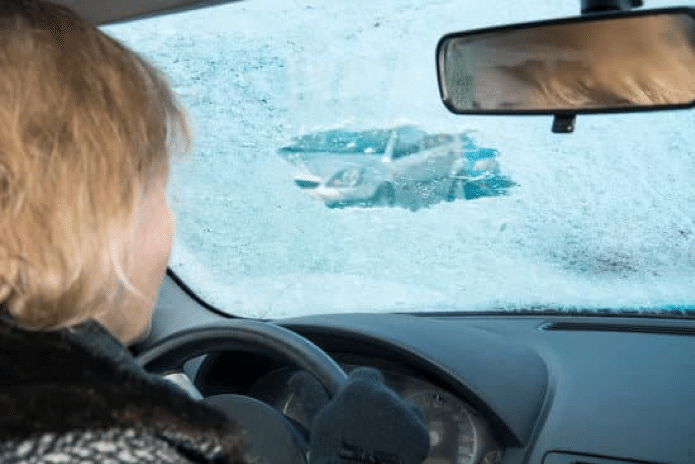
B. Get The Ice And Snow Off Your Car
Most people do not adequately remove the snow and ice from their car. It’s common for people to walk outside, see their car iced up, and simply let it run for 5 minutes. This sometimes doesn’t even get all the ice off the windshield! We’ve seen folks driving with only half their windshield frost removed. People, this is not safe. You need to have full visibility through your front and back windshield.
Get an ice scraper and get all the ice off all the windows. If you don’t have an ice scraper, use a CD or a spatula in the meantime. Then buy an actual ice scraper later that day.
And what about all the snow that’s pilled up on top of your car? You need to get that off as well so it doesn’t fall down onto your windshield while you drive.
Get a broom and push it off before heading out onto the road. You don’t need to get every snowflake off. Just enough so you won’t be surprised with large chunks of it suddenly impairing your visibility. You also don’t want to be responsible for a chunk of ice flying off and hitting another car.
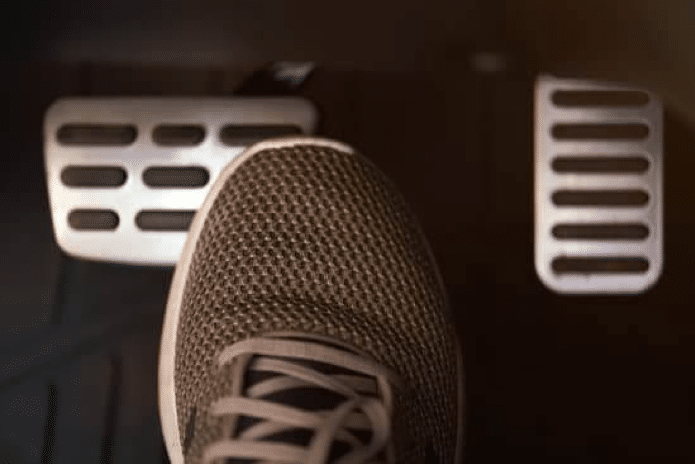
C. Slowly Speed Up And Down
When you accelerate, do it slowly. When you slow down, do it slowly. Keep enough distance between you and the car in front of you to safely do this. When driving in the snow, never accelerate quickly or slam on your breaks. This is what causes bad accidents.
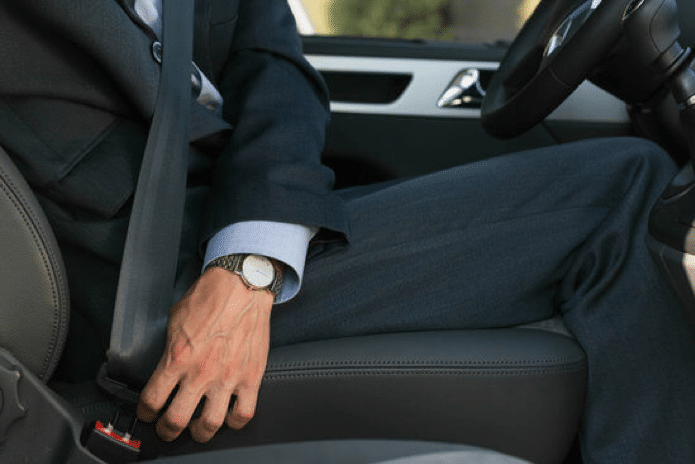
D. Wear Your Seatbelt
Come on, now. We shouldn’t have to tell you this. ALWAYS wear your seatbelt, no matter what – rain, snow, or sunshine. The potential consequences are simply not worth it. Though this is common sense, it’s certainly part of how to get your car ready for winter. Because you’re the one who drives it.
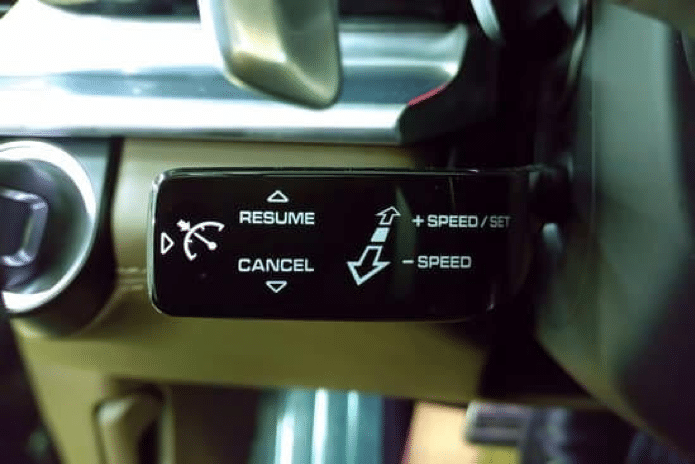
E. No Cruise Control
If there’s ice on the road, do not use cruise control. You need to have total control of the vehicle 100% of the time you’re behind the wheel. It doesn’t matter if you’re on the freeway or not. Never ever use cruise control in snowy and icy weather.
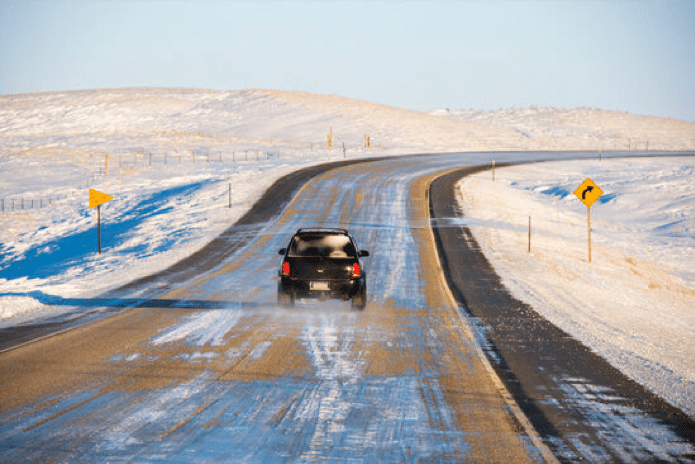
F. Look Out For Black Ice
Sometimes it’s very hard to see. It camouflages itself into the asphalt. If you hit some and begin to lose control, try not to panic. Take your feet off the gas and the breaks. Do this while keeping the wheel straight. What do you do if you fishtail? Whatever direction the back of your car is swinging, turn the steering wheel in that same direction. Turn the wheel gently. Not too hard. You’ll soon get your traction back or stop altogether.

8. How To Get Your Car Out Of A Snow Bank
Has this ever happened to you? Getting a car out of a snow bank is the worst. Follow these tips and you’ll help yourself and others much more efficiently.
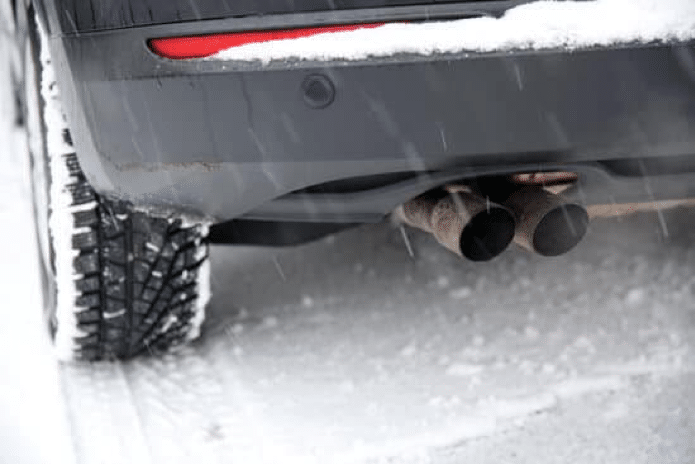
A. Check The Exhaust Pipe
The first thing to do is look and see if the exhaust pipe is clogged with snow. If not, great. But if it is, clear it out. Otherwise, carbon monoxide will get inside the car as you let the engine run.
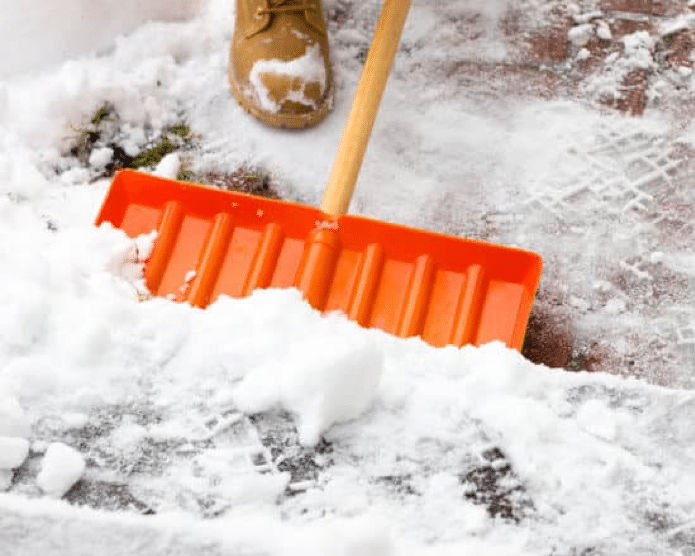
B. Dig
Hopefully you have a snow shovel of some kind in your trunk. This should be a standard emergency car tool if you live in a winter wonderland. You’ll likely need it to help yourself or to help someone else eventually.
Dig the snow out, making space in front, back, and under the car. Also, dig around the tires. You’ll slip much less during this whole process if you get most of that snow out of there. And don’t overwork yourself. Take breaks as needed. Don’t risk injuring yourself due to fatigue or frostbite or something like that. Get back in the car and warm up a bit and then get back at it.
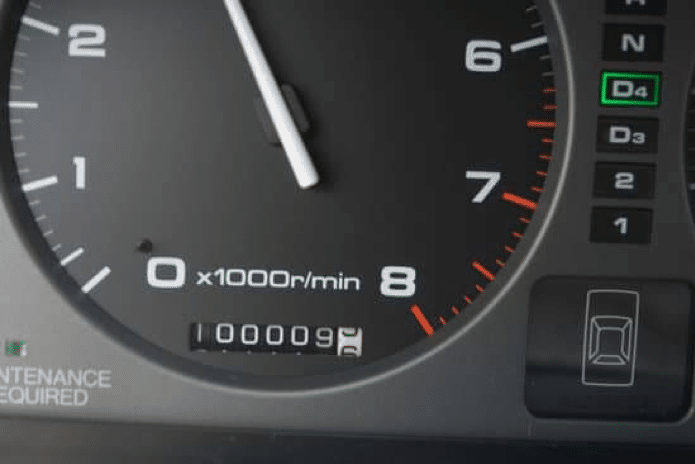
C. Don’t Rev
This is a common mistake. Instinctually, you want to continually put the gas peddle down to get unstuck. Why is this not only ineffective but also very bad? The more your wheels spin, the more friction it creates against the snow. The snow melts and quickly turns to ice. Sometimes almost immediately. You’ll make getting your car out of the snowbank harder by continually spinning the tires. Don’t do this.
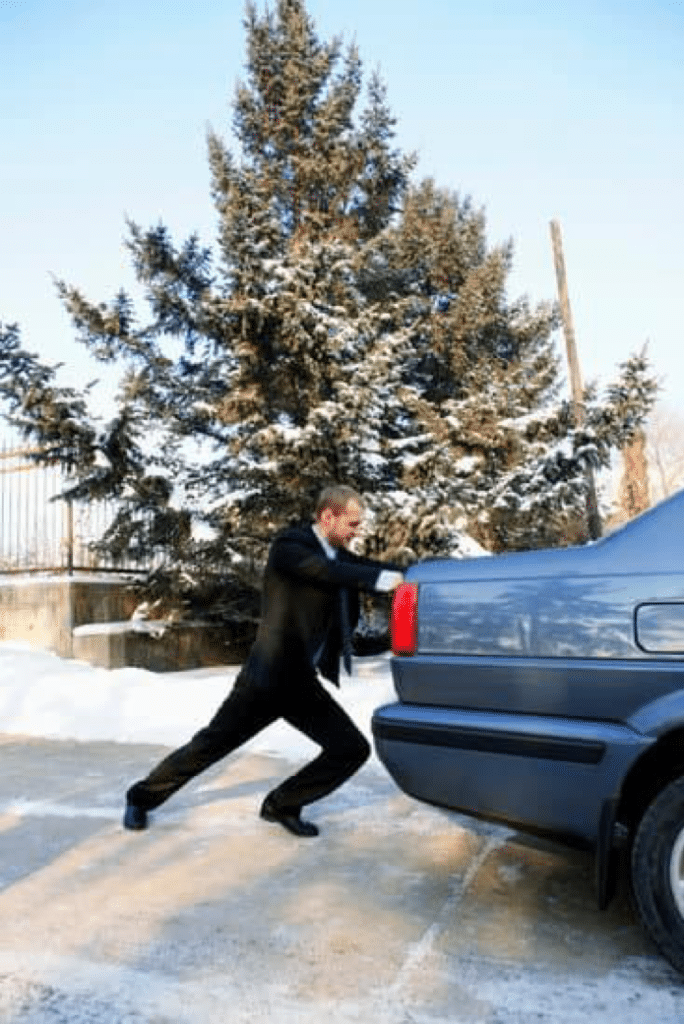
D. Use The Rock & Roll Technique
We don’t mean music. We’re talking about actually rocking the car back and forth. We find that most people instinctually know to do this. This method is very good at dislodging the car from the snow bank. Once you’ve cleared the snow, of course.
Depending on the kind of car you have, you may need some help rocking the car back and forth. The more people that help, the better chance you have of dislodging it.
When you’ve got people to help you, you need to sit in the drivers seat. People helping should push from the back, release, push again, and so on.
The car will begin to sway forward and backward and you will accelerate in the right moments. Accelerate either forward or backward. Whichever is appropriate to the situation. This should get your car unstuck in most scenarios.
If you don’t have any help and your alone, use your drive and reverse gears one after the other. Doing this in the correct intervals may do that trick.
How To Get Your Car Ready For Winter Driving (Best Advice) – Conclusion
Now you’re the one among your friends who knows how to get your car ready for winter! A lot of the advice in this article is common sense.
Be smart when you’re driving in the winter. And make sure you get your car ready for winter driving by following the winterizing tips here.

